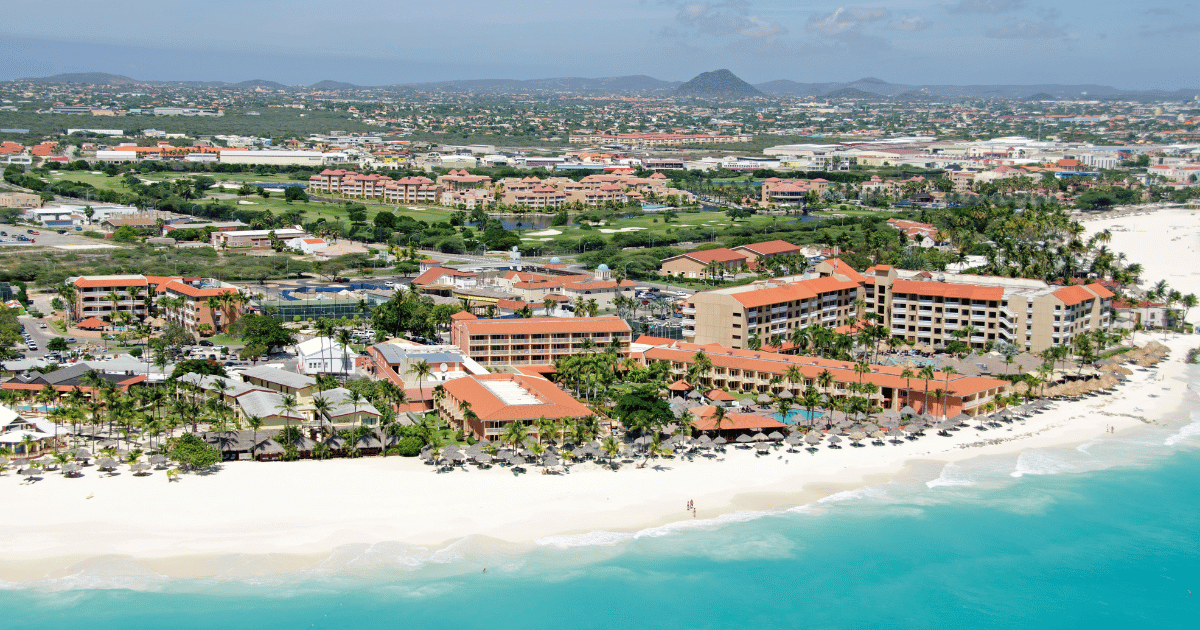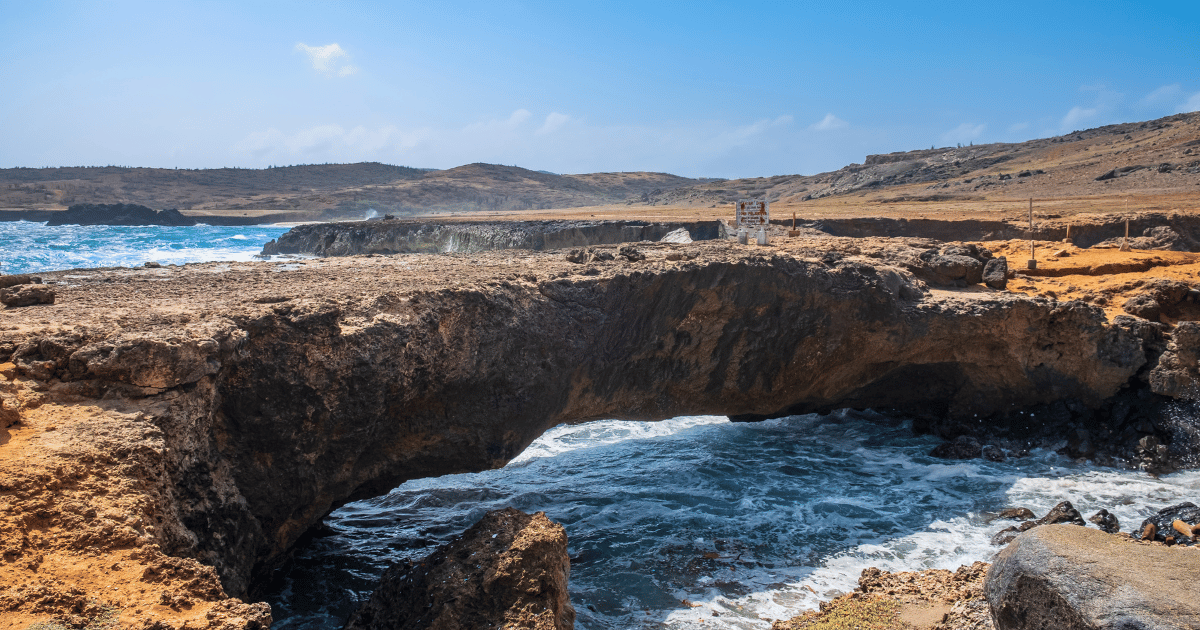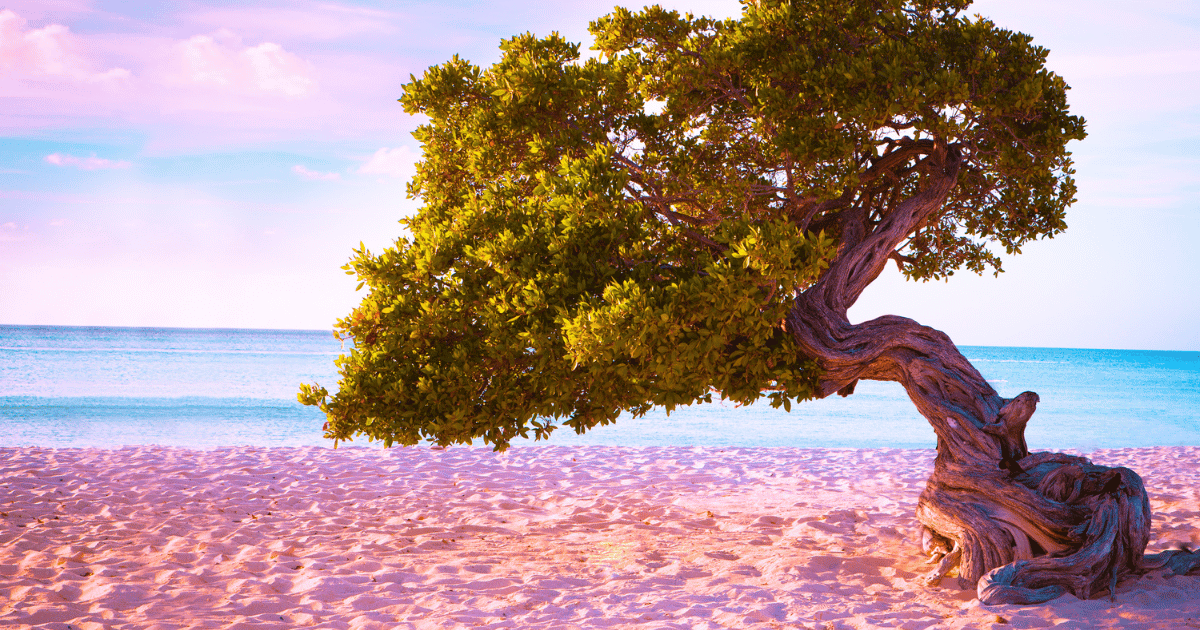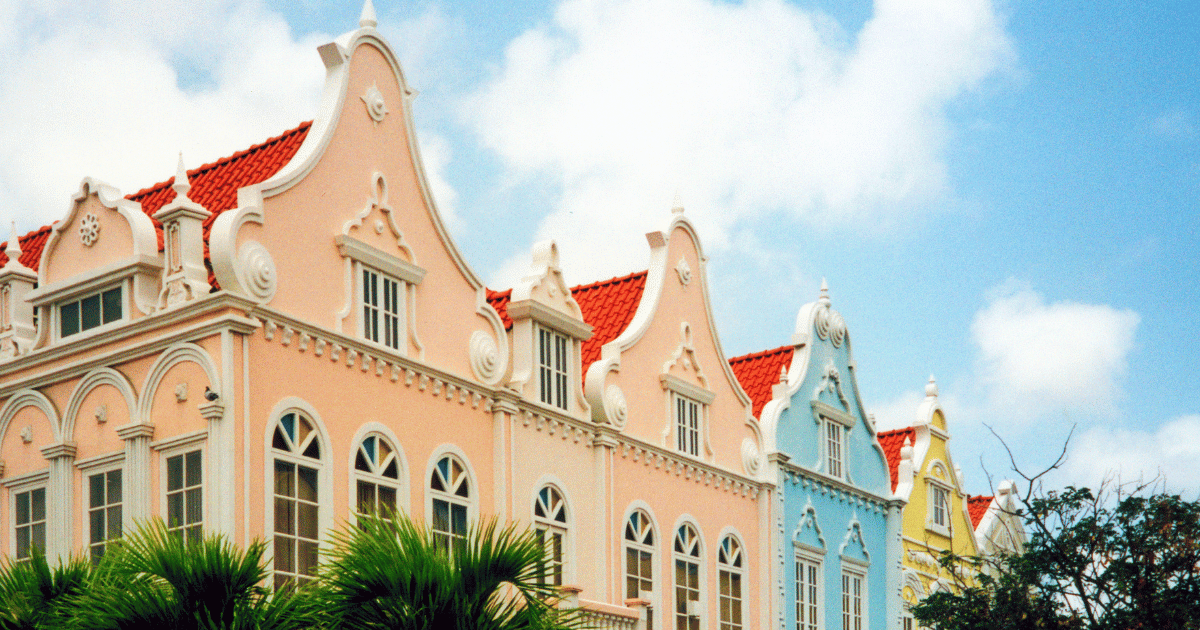
ARUBA
Aruba’s beaches are our obsession! Our blog is full of insider tips on the island’s top beach destinations, featuring all that Aruba has to offer. Looking for the ultimate snorkeling spots, the best beachside restaurants, or just the secrets to a perfect beach day? We’ve got it all and more, all shared through our love of Aruba’s sunny beaches.
See all GuidesQuick Facts About Aruba
| CATEGORY | FACTS |
|---|---|
| Location | Southern Caribbean Sea, off the coast of Venezuela |
| Borders | None (Island nation) |
| Climate | Tropical marine climate, with warm temperatures year-round and low rainfall |
| Population | Approximately 106,000 (2023) |
| Official Language | Dutch and Papiamento |
| Currency | Aruban Florin (AWG) |
| Capital | Oranjestad |
| Major Industries | Tourism, oil refining, and offshore banking |
| Religion | Predominantly Roman Catholic, with Protestant and other faiths present |
| Time Zone | GMT-4 (Atlantic Standard Time) |
| National Symbols | The Aruban flag, the Burrowing Owl (Shoco), and the Divi-Divi tree |
Geography and Environment

Major Physical Features
Aruba is unlike many other Caribbean islands with its unique arid landscape. Instead of dense forests, you’ll find cacti, divi-divi trees, and rocky terrain. The island is mostly flat, with the highest point being Mount Jamanota at 188 meters (617 feet). its coastline is famous for its stunning beaches, particularly Eagle Beach and Palm Beach, which are known for their pristine white sand. The west and south coasts are where you’ll find most of the resorts, while the northern and eastern shores remain rugged and less developed. If you’re into nature, Arikok National Park is a must-see. It covers almost 20% of the island and features caves, ancient rock art, and diverse wildlife.
Seasonal Variations
Aruba enjoys a consistent, warm climate year-round, with average temperatures hovering around 27°C (81°F). The island’s location outside the hurricane belt means severe weather is rare. From October to January, the island experiences its brief rainy season, with short showers that don’t usually affect daily activities. One of the best things about Aruba is its constant trade winds. These winds help cool down the tropical heat, making your stay much more comfortable.
Natural Resources
Aruba’s natural beauty is one of its greatest assets. The beaches and marine life are central to its tourism industry. The coral reefs and marine ecosystems around the island are perfect for snorkeling and diving. The Caribbean Paradise is also known for its aloe vera, a plant that’s deeply rooted in the island’s history and is used in many local products. Although oil refining was once a significant part of Aruba’s economy, tourism has taken the lead in recent years.
Environmental Challenges
Water scarcity is a significant issue for Aruba due to its arid climate. The island relies on desalination to provide fresh water. Coastal erosion is another concern, especially with the constant development of beachfront areas for tourism. This erosion poses a threat to both the beaches and the marine ecosystems. Waste management is also a challenge, with the large number of tourists generating significant waste. Ongoing efforts aim to improve recycling and waste disposal to help preserve Aruba’s natural beauty.
History and Culture

Historical Background
Aruba’s history starts with the Arawak people, who were the island’s first inhabitants, migrating from South America. They lived there for centuries before Europeans arrived. The Spanish claimed Aruba in 1499, but it wasn’t long before the Dutch took control in 1636. Since then, the island has remained part of the Kingdom of the Netherlands, though it operates with a high level of autonomy. Over the years, Aruba’s economy has seen various phases—from gold mining in the 19th century to aloe cultivation and oil refining in the 20th century. Today, tourism is the main economic driver.
Key Historical Events
• 1636: Dutch Colonization – Aruba officially became part of the Dutch West India Company’s holdings, marking the start of Dutch influence that continues to this day.
• 1924: Oil Refinery Established – The opening of the Lago Oil Refinery brought significant economic change, turning Aruba into a major oil processing hub during the 20th century.
• 1986: Status Aparte – Aruba gained greater autonomy by separating from the Netherlands Antilles, becoming an autonomous territory within the Kingdom of the Netherlands.
• Tourism Boom (1990s-Present) – The 1990s marked a surge in tourism, now the cornerstone of its economy, drawing over a million visitors each year.
Unique Aspects Of Aruba
Unique Flora and Fauna

Endemic Plant Species
Aruba’s dry landscape is home to some unique plants that have adapted to the island’s tough conditions. One of the most iconic is the Divi-Divi tree, known for its distinctive shape. This tree always leans in the direction of the wind, a natural adaptation to the island’s constant breezes. It’s a true symbol of Aruba’s resilience.
Another notable feature of this Tropical Escape plant life is its cacti varieties. The Kadushi cactus and Yatu cactus are commonly found across the island. These cacti are not just part of the scenery; they play an important role in the ecosystem, providing shelter and food for various animals and helping to prevent soil erosion.
Unique Wildlife
Aruba’s wildlife is just as unique as its plant life. The Burrowing Owl, known locally as the Shoco, is a beloved national symbol. This small owl, which nests in the ground, is a rare species found only on the island. Conservation efforts are in place to protect its habitat and ensure its survival.
Another fascinating creature is the Aruban Whiptail Lizard. This lizard is endemic, meaning it’s found nowhere else in the world. It plays a crucial role in the island’s ecosystem by helping to control insect populations.
Culture and Traditions
Carnival
Carnival is a celebration of the island’s spirit. It has deep roots, starting in the early 1950s, and has grown into one of the most anticipated events of the year. Carnival is a time when the whole island comes alive with music, dance, and vibrant costumes.
The Grand Parade is one of Carnival’s most significant events. It’s a day when the streets are filled with elaborate floats and performers, all competing for the title of the best in show. Another highlight is the Lighting Parade, where participants and floats are decorated with lights, creating a dazzling nighttime spectacle.
Papiamento Language
Papiamento is the heart of this beach paradise cultural identity. This unique Creole language evolved from a mix of Portuguese, Spanish, Dutch, and African languages, reflecting the island’s diverse history. It’s spoken in daily life and is a source of pride for Arubans.
Unique Architectural Style

Dutch Colonial Influence
Aruba’s capital, Oranjestad, is famous for its Dutch colonial architecture. As you stroll through the city, you’ll notice buildings painted in bright pastel colors—pinks, blues, yellows—that stand out under the Caribbean sun. These buildings often feature distinctive gabled roofs, a hallmark of Dutch design that has been beautifully preserved on the island.
While the traditional style is still prominent, you’ll also see modern adaptations of this architecture across the island. Newer buildings blend the old Dutch elements with contemporary design, creating a unique mix of history while embracing the future.
Culinary Identity
Traditional Dishes
Aruban cuisine offers a taste of the island’s rich culture. One of the most traditional dishes is Keshi Yena, a savory meal made with cheese stuffed with spiced meats, vegetables, and sometimes even raisins. It’s a comforting dish that showcases the island’s love for hearty, flavorful food.
Two other staples you should try are Funchi and Pan Bati. Funchi is a cornmeal dish similar to polenta, often served alongside stews or meats, while Pan Bati is a type of flatbread with a slight sweetness, perfect for mopping up sauces. These foods are deeply rooted in the island’s culture and are enjoyed by locals and visitors alike.
Influence of Multi-Cultural Heritage
Aruban cuisine is a true culinary fusion, shaped by the island’s multicultural heritage. You’ll find flavors and techniques influenced by African, Dutch, and Caribbean traditions. This blend is what makes the island’s food so unique—every bite tells a story of Aruba’s diverse history.
Given its location, it’s no surprise that seafood plays a big role in Aruban cuisine. Fresh catches like grouper, snapper, and wahoo are commonly featured in dishes, often prepared with a local twist. These seafood specialties are a must-try when visiting, offering a taste of the island’s coastal bounty.
Role in Global Conservation Efforts
Marine Conservation Initiatives
Aruba is playing a key role in marine conservation, focusing on protecting its rich underwater life. One major effort is coral reef restoration. Aruba’s reefs, vital for marine biodiversity, are being restored through projects that involve planting new corals and protecting existing ones. These initiatives are crucial as coral reefs support a wide variety of marine species and are essential for the island’s tourism.
Aruba is also committed to turtle conservation. The island has several programs designed to protect endangered sea turtles, particularly during nesting season. These programs include monitoring nesting sites and running public awareness campaigns to educate locals and tourists about the importance of preserving these gentle creatures. By safeguarding nesting areas, Aruba ensures that future generations of sea turtles can thrive.
Sustainable Tourism Practices
In Aruba, sustainability is more than just a buzzword; it’s a practice. Many eco-friendly resorts on the island are leading the way in promoting green tourism. These resorts prioritize sustainable practices like using solar energy and organizing regular beach clean-ups. Their efforts not only reduce environmental impact but also offer guests a way to enjoy Aruba responsibly.
Aruba’s commitment to the environment extends beyond tourism. The island has implemented green initiatives like banning single-use plastics and promoting renewable energy. These steps are part of a broader plan to make Aruba a leader in sustainability, ensuring that its natural beauty remains intact for future visitors.
Strategic Importance in Caribbean History
World War II Significance
During World War II, Aruba played a significant role in the Allied war effort, largely due to the Lago Oil Refinery. This refinery was one of the largest in the world at the time and was crucial for producing fuel for the Allies. Its strategic importance made Aruba a vital asset in the Caribbean during the war.
To protect this valuable resource, measures were taken to defend the island from potential Axis attacks. Aruba’s defense included fortifications and an increased military presence, ensuring that the refinery and the island remained secure. This period in Aruba’s history highlights the island’s strategic importance and its contribution to global events.
Aruba Guides
Select the place you are most interested in, and you will be taken to the appropriate information and reviews. With these guides, we are confident that you have the optimal source of information to find your next dream destination.
